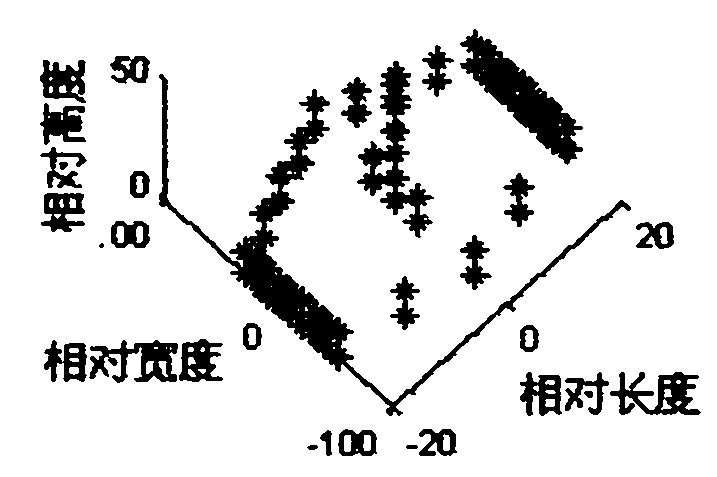Inverse synthetic aperture radar imaging method based on time-phase derivative distribution
A technology of inverse synthetic aperture and radar imaging, applied in the field of radar, can solve the problem of not being able to produce high-quality images, and achieve the effect of small amount of calculation and high parameter estimation accuracy
- Summary
- Abstract
- Description
- Claims
- Application Information
AI Technical Summary
Problems solved by technology
Method used
Image
Examples
Embodiment Construction
[0038] The specific implementation method of the present invention is as follows figure 1 As shown, the process is as follows:
[0039] Firstly, motion compensation is performed on the echo signal, and then an echo signal model of the target is established. In the present invention, the echo signal is described as a multi-component polynomial phase signal model. The time-phase derivative distribution method is used to estimate the parameters of the multi-component polynomial phase signal, and then the distance-instantaneous Doppler imaging method is used to obtain the transient ISAR image of the target.
[0040] 1. Establishment of echo signal model
[0041] according to figure 2 The radar sight coordinate system shown, assuming that the echo has been motion compensated, the radar sight unit vector is r, and the synthetic rotation vector of the maneuvering target is Ω, the radar sight coordinate system xyz is established. The z-axis coincides with the r-axis, so that the x-axis li...
PUM
 Login to View More
Login to View More Abstract
Description
Claims
Application Information
 Login to View More
Login to View More - R&D
- Intellectual Property
- Life Sciences
- Materials
- Tech Scout
- Unparalleled Data Quality
- Higher Quality Content
- 60% Fewer Hallucinations
Browse by: Latest US Patents, China's latest patents, Technical Efficacy Thesaurus, Application Domain, Technology Topic, Popular Technical Reports.
© 2025 PatSnap. All rights reserved.Legal|Privacy policy|Modern Slavery Act Transparency Statement|Sitemap|About US| Contact US: help@patsnap.com



